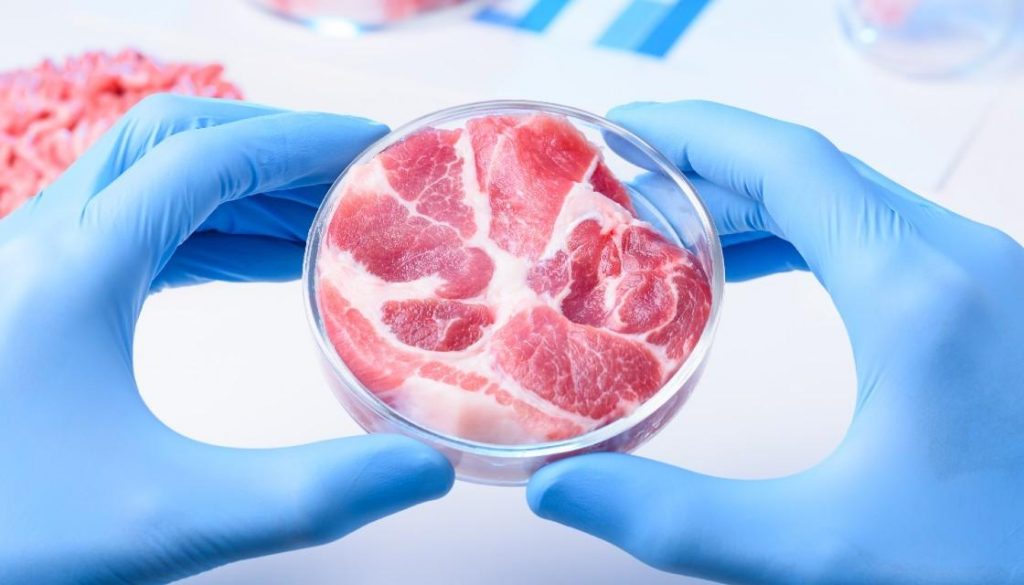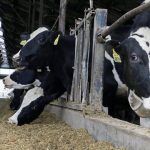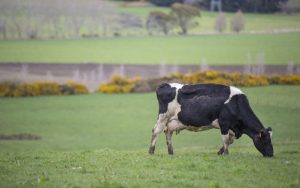
With agriculture accounting for almost half of New Zealand’s total greenhouse gas emissions and increasingly greater pressure from consumers for “greener” food, some are predicting the development of alternative proteins – including lab-grown meat and milk – could end up forcing traditional Kiwi farmers out of business.
In its ambitious Fit for a Better World plan – which aims to boost primary sector exports by $44 billion over the next decade – the Government acknowledges that technology will have a far-reaching impact on the sector, predicting that “within 10 years our businesses and production systems should be almost unrecognisable from today”.
The report stresses the importance of moving with the times and using technology to enhance the country’s primary industries.
Already well aware of the possibilities technology can play is David Downs, who leads the Government’s agritech task force.
As part of that task force, he’s focused on growing the agritech sector to help increase exports and advance sustainable primary production in the country.
Downs told Newshub that currently too much of New Zealand’s primary production lies in the “volume space” and not in the “premium space”, something the industry is working to change.
“Being a commodity supplier on a global market means you’re a price taker, not a price maker,” he says.
“So embracing technology is part of a strategy to move up the value chain that we’re already part of.”
Much of the technology developed in recent years, such as blockchain – which makes it possible to show traceability and providence of agricultural products in a way not easily done previously – works to New Zealand’s advantage, especially given we’re already largely seen as being a “premium supplier”.
“The way to defend that position and retain it is by making sure that you are staying premium and that you’re proven to be premium, by proving provenance, improving quality – and being able to give consumers what they want in terms of traceability is going to be a big part of it,” says Downs.
More and more companies – such as dairy giant Fonterra – are also utilising technology to measure on-farm emissions, giving farmers precise data and tools to reduce their carbon footprint.
Arama Kukutai, co-founder of US-based agritech investment company Finistere Ventures, says while technology providing transparency around products’ traceability and carbon footprint is a good start, companies will have to do much more if they are to remain competitive and keep up with consumer demands.
“I call that enabling technology,” he says, “it’s not transformative technology.”
“I think those are becoming, frankly, the price of admission, they’re not unique factors.”
With the focus on greener, more sustainable agriculture, he says more and more companies are investing in technology that has the potential to revolutionise farming as we know it.
The gaining popularity of alternative proteins
One growing field of technology that could be gamechanger for the sector is alternative proteins.
Kukutai says in recent years there has been an explosion of investment into these proteins, which include everything from algae and plant-based foods to cultured or ‘clean’ meat and lab-made milk.
He predicts such investment – particularly into lab-grown proteins – could have far-reaching consequences for farmers around the world, including here in New Zealand.
Advocates for lab-grown proteins say they are beneficial both in terms of animal welfare and the environment. And with more and more consumers showing a greater interest in where their food comes from the fledgling industry is gaining steam.
Last year authorities in Singapore gave the green light for “no-kill, lab-grown” chicken meat to be sold in the country. Approval of the cultured meat, which is produced in bioreactors without the slaughter of any animals, was hailed as a landmark moment for the industry, with some suggesting it could open the door to a future where all meat is produced without killing any livestock.
Kukutai says if the level of investment taking place is anything to go by, such lab-grown food could become commonplace one day in the not-too-distant future.
“There’s something of a renaissance of technology and investment into plant and meat substitutes as well as an explosion of new alternative dairy products.”
While lab-based meats remain a relatively small category in total dollar numbers relative to the meat consumed from cattle sources, he says many newer companies, as well as large traditional players, are beginning to hedge their bets and invest in alternative proteins.
A record US$3.1 billion was invested in alternative proteins in 2020 – three times more than that invested in 2019 and 4.5 times than in 2018, according to The Good Food Institute, an alternative protein advocacy group.
One recent study out of the US predicts alternative meat, eggs, dairy and seafood products will make up 11 percent of the overall protein market by 2035, representing a total of US$290 million.
However, “faster technological innovation and full regulatory support” could see that share rise to 22 percent, concluded the study by management consulting firm BCG and venture capital firm Blue Horizon.
“At that rate, Europe and North America would reach ‘peak meat’ by 2025, and then the consumption of animal protein in those markets would actually begin to decline,” the report states.
The result of such growth, says Kukutai, is that ultimately alternative proteins – especially those grown in labs – could pose an “existential threat” to traditional farmers, given they are “not meat substitutes but are actual meat produced without the use of animals, or the slaughter of animals, or warranting milking of animals”.
“I think traditional agriculture producers cannot underestimate the potential of this segment to disrupt their traditional businesses.”
‘A transition, not a switch’
Brendan O’Connell, chief executive of Agritech NZ, says while alternative proteins would “necessitate some important changes” for the sector, he doesn’t think New Zealand farmers would be significantly affected – at least not for a while.
Calling the technology an existential threat, he says, is “a bit too strong”.
“I think the conversations on that topic need a bit more acuity,” he told Newshub.
“‘New food systems will destroy old ones’, is just too simple and dramatic a dialogue. Globally there will be a reduced role for meat and dairy in many diets in some regions, and an increased role in others. Even if the overall position is a decline, that doesn’t mean there can’t be an increase in particular systems like well-managed, grass-fed systems.”
He says even with more options in the market, natural food systems – such as those in New Zealand – will still have a place as consumers will value what is rare, and hopefully pay top dollar for it.
“The trick,” he says, “is to grab 5 percent of the plate choices of those who can afford to recognise the value of values.”
Moreover, the key is to amplify that value through continued change and improvements.
“Technology will have a significant role to play in that,” he says, “[by] creating new levers to farm sustainably, prove provenance, manage and protect scarce resources, build connections and, where animals play a part, enable improved per animal productivity and welfare.”
The result, he adds, will be a gradual change to our farming methods – “a transition, not a switch”.
“We know that commodity products like ground beef and standard milk powder pay the bills currently. That’s unlikely to be the case in 20 years’ time.”
























